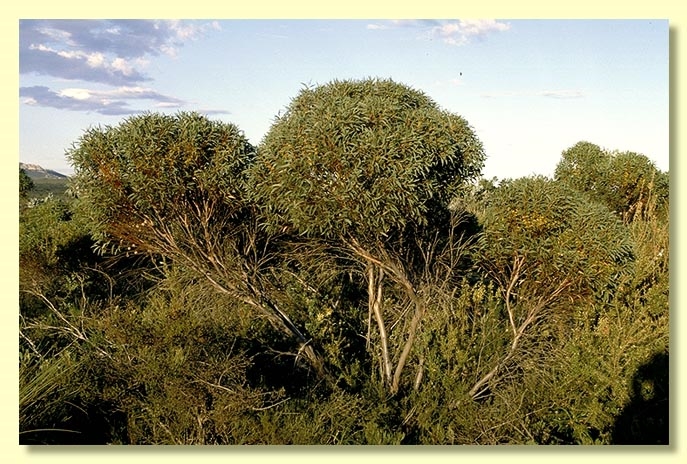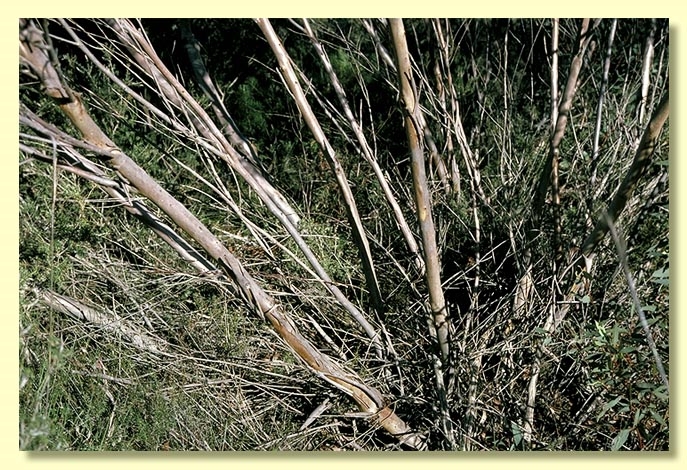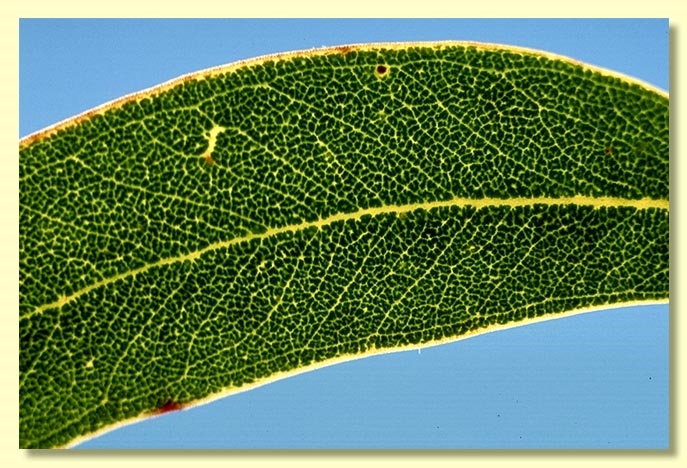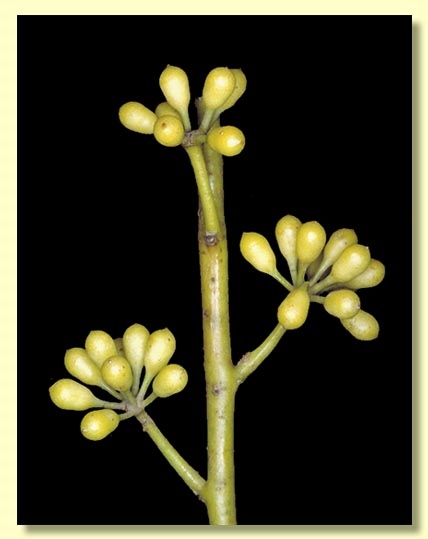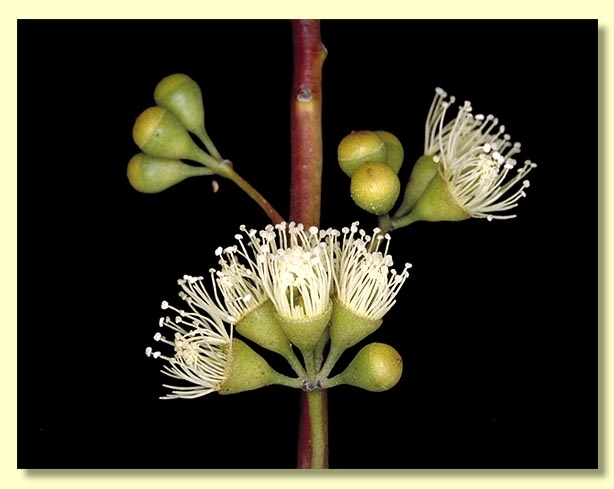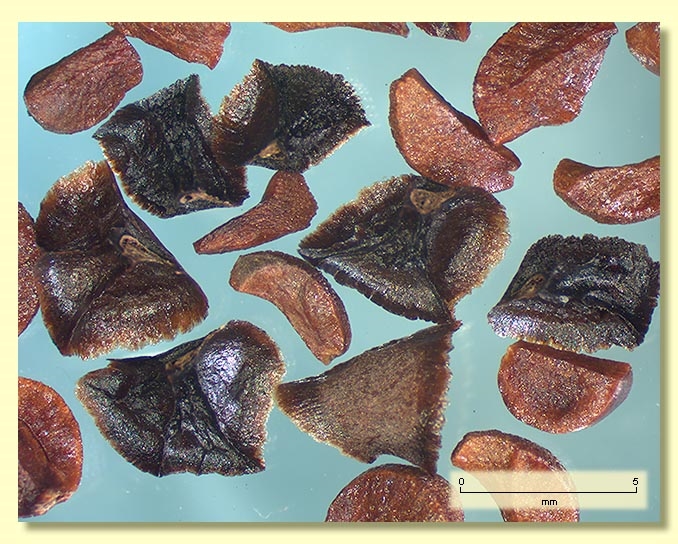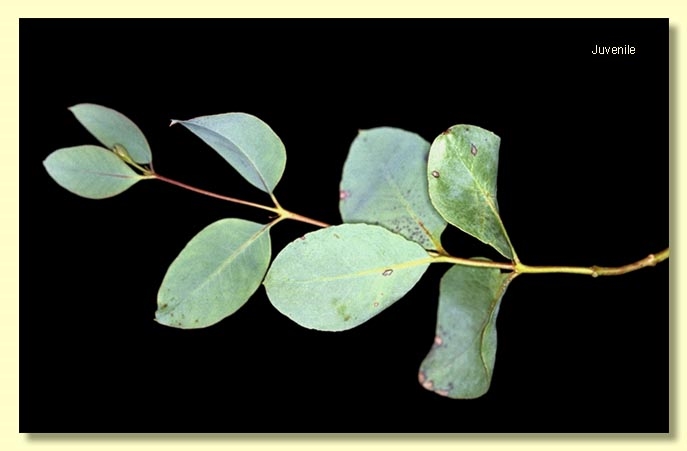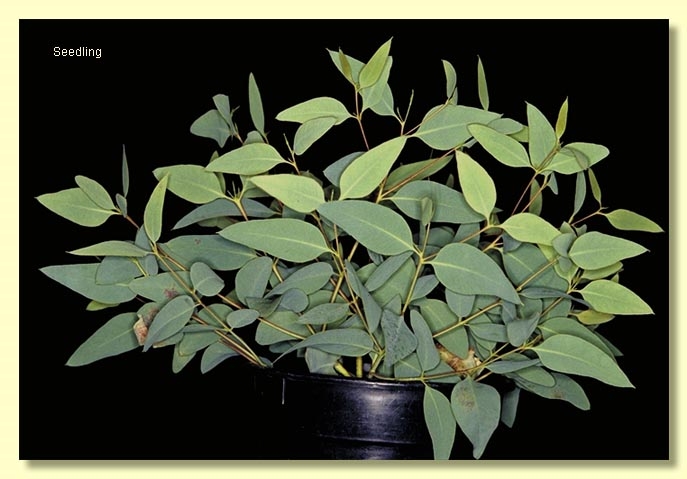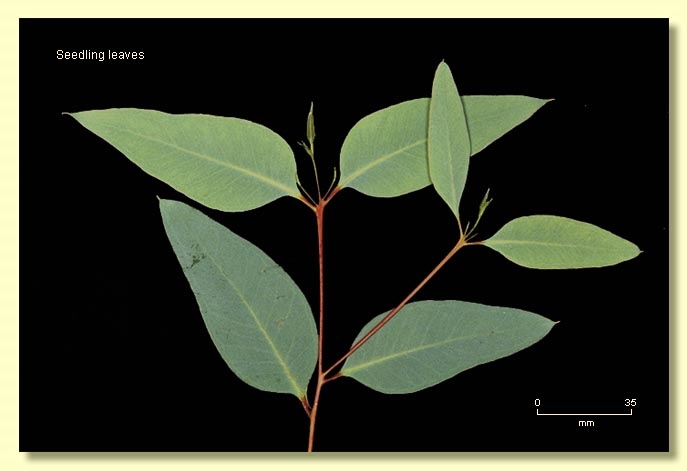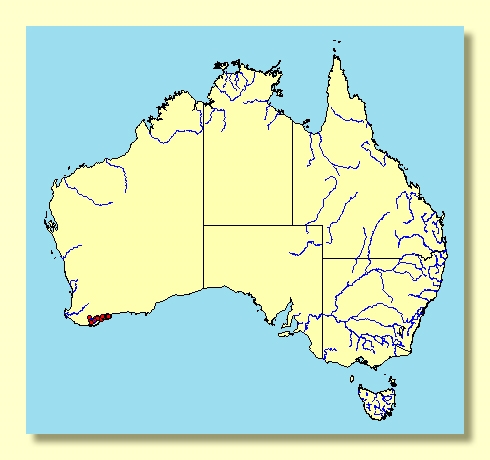Euclid - Online edition
Eucalyptus buprestium
Eucalyptus | Eucalyptus | Longistylus | Frutices | Diversiformae | Cochleatae
Bark smooth, greenish brown and cream, shedding in ribbons.
Branchlets lacking oil glands in the pith.
Juvenile stems rounded in cross-section; juvenile leaves opposite, sessile, more or less elliptical and bluish for a few nodes then becoming alternate, petiolate, lanceolate, 4.5–7 cm long, 1.5–2 cm wide, dull, green.
Adult leaves alternate, petioles 0.4–1 cm long; blade narrowly lanceolate, 3–7.7 cm long, 0.6–1 cm wide, base tapering to petiole, margin entire, apex pointed, concolorous, dull to slightly glossy, green, side-veins at an acute or wider angle to midrib, reticulation sparse to moderate, intramarginal vein remote from margin, oil glands obscure.
Inflorescence axillary unbranched, peduncles 1–2 cm long, buds 9 to 15 per umbel, pedicels 0.2–0.5 cm long. Mature buds obovoid to pyriform, 0.5–0.6 cm long, 0.3–0.5 cm wide, scar absent, the single operculum rounded and often apiculate, stamens inflexed, anthers oblong to reniform, versatile, dorsifixed, dehiscing by short oblique slits that are not confluent apically, style long and straight, stigma tapered, locules 4, the placentae each with 2 vertical rows of ovules. Flowers white.
Fruit sessile or on pedicels to 0.2 cm long, almost spherical, 1.8–2.6 cm long, 1.7–2.6 cm wide, orifice small, disc descending, valves 4, enclosed.
Seeds blackish brown, 3–7 mm long, obliquely pyramidal, margin flanged, dorsal surface curved to meet terminal hilum, ventral surface sharply.
Cultivated seedlings (measured at ca node 10): cotyledons reniform, large; stems rounded in cross-section; leaves opposite for at least 9 or 10 nodes, sessile and broadly elliptic-oblong and with base stem-clasping to rounded until ca node 4–6 then shortly petiolate, becoming ovate-lanceolate, 5–6.5 cm long, 3–4 cm wide, dull, green or grey-green. Seedlings much branched.
Flowering has been recorded in September, October and November.
A small mallee endemic to Western Australia, on coastal and subcoastal sandplains, particularly from the Stirling Range to Bremer Bay and Fitzgerald River National Park. The stems are smooth and the adult leaves small, erect and narrow. The most striking feature of E. buprestium is the transition from very small mature buds to fruit, which are large and more or less spherical, occurring in dense clusters inside the crown.
Eucalyptus buprestium belongs in Eucalyptus subgenus Eucalyptus series Diversiformae, a group of mallee species characterised by adult leaves held ± erect, buds with a single operculum (hence no operculum scar), cuboid-oblong anthers that shed pollen by two separate slits, ovules arranged in 2 rows on the placenta, pyramidal seed, and seedling and juvenile leaves opposite for many pairs.
E. buprestium differs from other co-occurring species with erect leaves by having prominently flanged seed and the fruit characters mentioned above.

